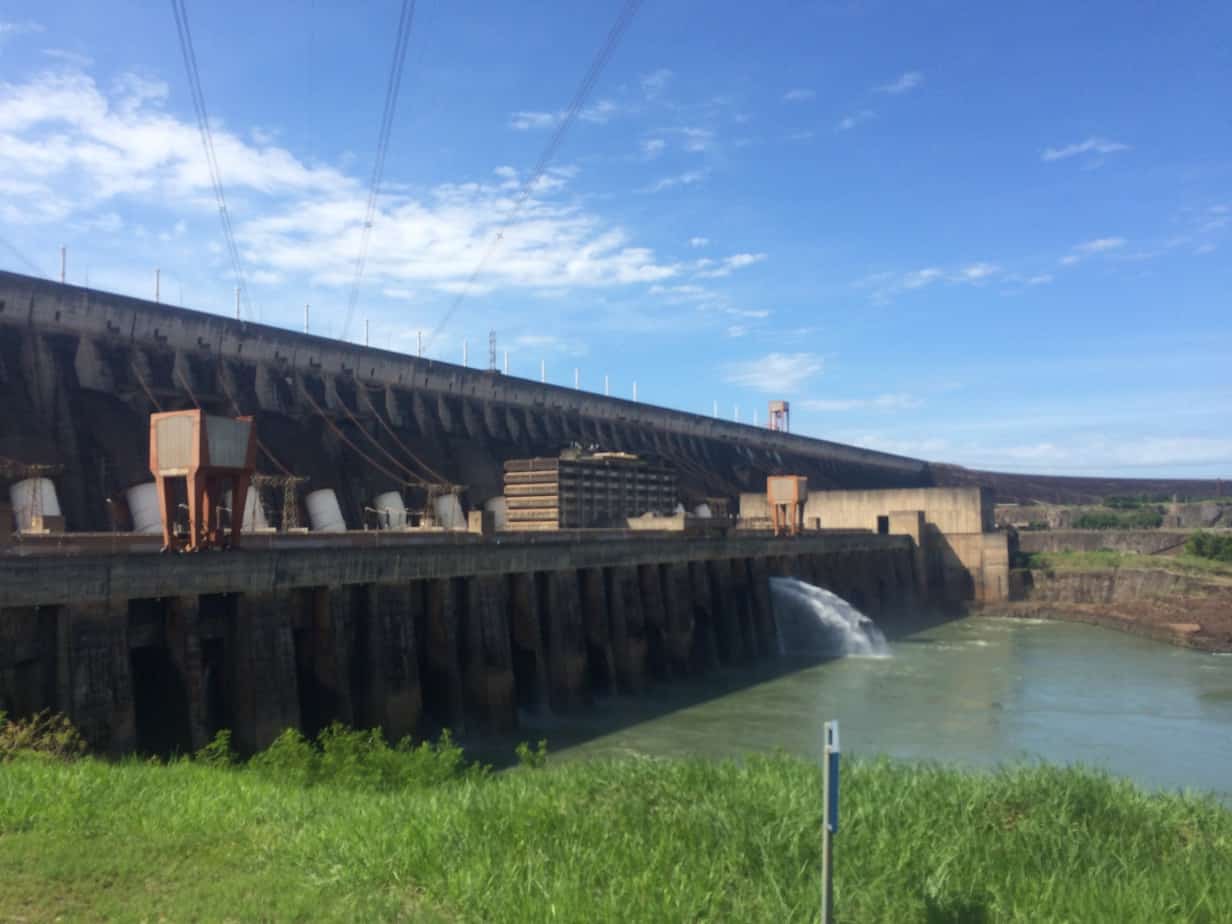Armed with information on local bus services from our couch surfing host, we caught the bus from Fos del Igauzu to the entrance gate to Itaupu dam. A distance of approx. 6km only.
The dam was built in the mid 1970s and is jointly owned by Paraguay and Brazil. It straddles the Rio Plata, which eventually ends up in Buenos Aires many miles south. Its the second biggest dam in the world after the recently constructed 3 Gorges dam in China but still holds the record for hydro electric power produced in a calender year. It provides all of Paraguay’s electrical energy and 16% of Brazils.
There are a few choices of tours (all on open top double decker buses, which seem to be the Brazilian favoured mode of transport ); the most popular takes you to the dam face (on the Brazilian side) along the top of the dam wall and offers a boat trip on the resevoir (Paraguayan side). There’s also the deluxe tour which includes a look at the inside of the dam and at the 20 turbines at work. As we are on traveller’s budget, we gave the deluxe tour a miss but what we did see was mighty impressive. The scale of the structure was simply immense.


Paraguay
As a footnote to this blog, we thought we would write a quick note on Paraguay and travelling in same. During our very limited few days in the country, with the exception of the dam (which is administered mainly on the Brazilian side) we found travel and information for travellers in Paraguay to be extremely difficult. Unless you follow one of the very limited number of bus routes travelling the main roads through the country, via Asuncion, or are lucky enough to have your own 4 wheel drive transport, there is very little available for you. We attempted to arrange trips to Largo Blanco and to the old Germanic settlement of Filadelfia, as both were recommended by The Book…but faced with untold hours of waiting at isolated T juntions in the hope that a rare bus might be persuaded to stop for us and stories of multiple day waits for transport in the back of nowhere, we shelved both ideas and headed towards Bolivia where there are at least one or two options for travellers.
